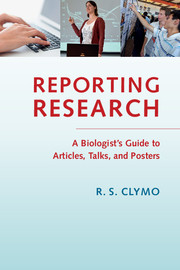6 - Frequently misused words and technical terms
Published online by Cambridge University Press: 05 October 2014
Summary
The ill and unfit choice of words wonderfully obstructs the understanding.
Francis Bacon, Novum Organum, 1620Style books often contain lists of words that are commonly misspelled or misunderstood. Many of these words form pairs, some with opposite or similar-sounding partners, others with a similar (or identical: ‘rowing’ and ‘rowing’) spelling but different meanings. I will not repeat here, except for a few hardy perennials, what is amply and expertly explained in other works. Buy a dictionary of about 1000 A5 pages or so (and use it) and consult Gowers revised Greenbaum & Whitcut (1986) and Fowler revised Gowers (1968).
What follows is in two lists: misused common words, then often misunderstood more technical terms (usually with longer explanations). The technical terms are also listed without details in the first list.
Many well-educated people would consider a lot of the distinctions that follow in the first list to be mere pedant-fodder – they are – but some impede understanding, and these are certainly worth noting. Remember, too, that a characteristic of good scientific style is that it causes no distractions. Why annoy even a few of your readers when you could easily avoid doing so?
- Type
- Chapter
- Information
- Reporting ResearchA Biologist's Guide to Articles, Talks, and Posters, pp. 157 - 188Publisher: Cambridge University PressPrint publication year: 2014



